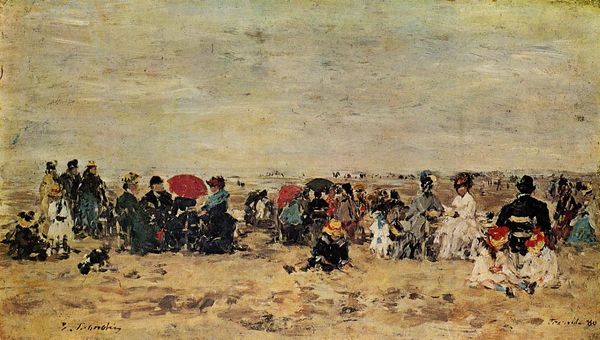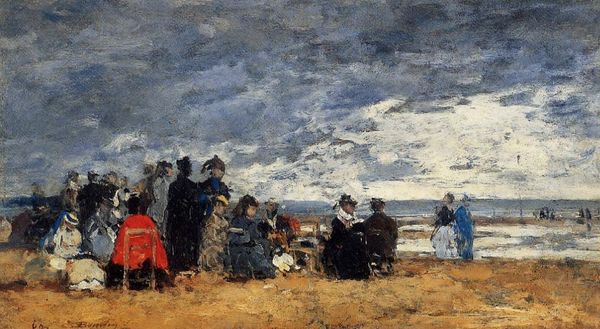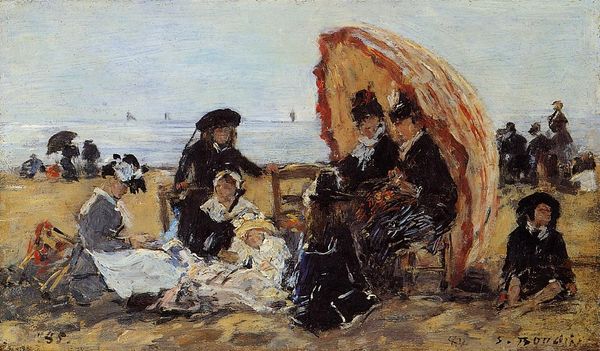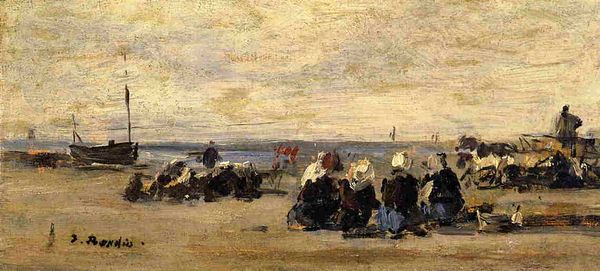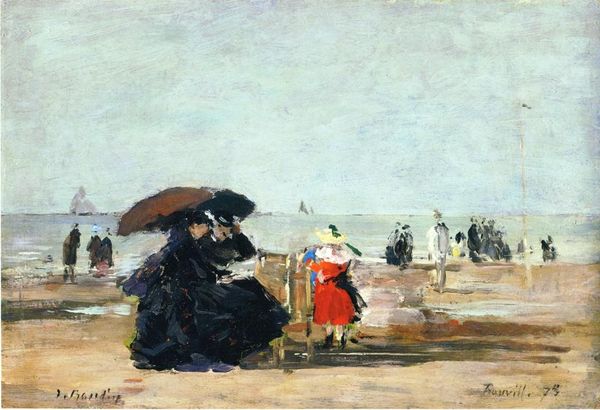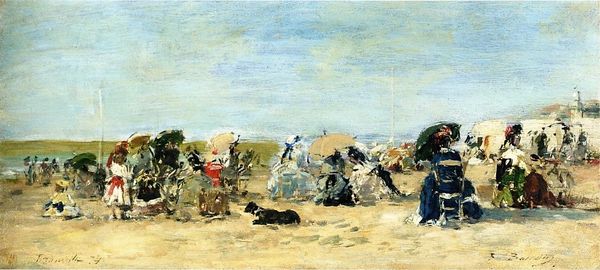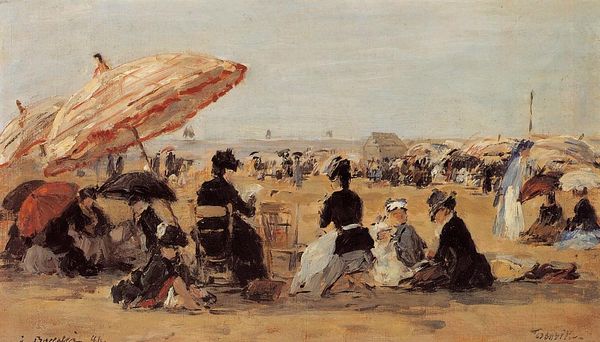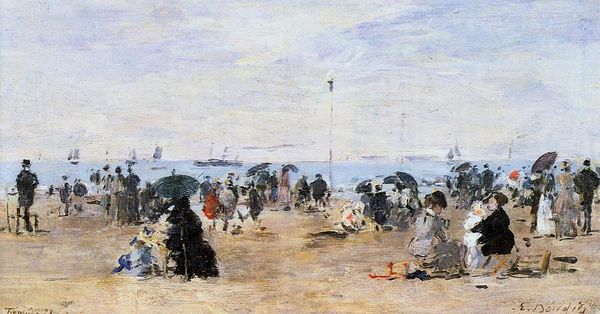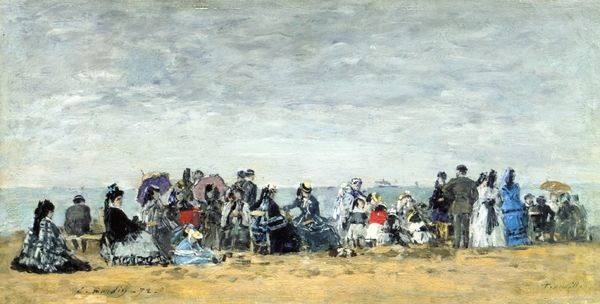
painting, plein-air, oil-paint
#
painting
#
impressionism
#
plein-air
#
oil-paint
#
landscape
#
impressionist landscape
#
figuration
#
oil painting
#
genre-painting
Copyright: Public domain
Curator: Here we have Eugène Boudin's "Beach Scene at Trouville," an oil painting. There's no specific date associated with it, but given Boudin's oeuvre, it’s likely from the mid-19th century. What's your immediate response to this canvas? Editor: It feels like a memory fading. Soft, dreamlike. All these figures blurred together like sea mist, they seem to be soaking up a moment in time, yet also slipping away with the tide. Curator: Absolutely. Boudin was a master of capturing the fleeting qualities of light and atmosphere, central to the Impressionist style. You see here the adoption of plein-air painting, where the artwork is made outside on location and emphasizes materiality itself, to offer a snapshot of contemporary social life. The industrial revolution enabled both more efficient paint production but, maybe more importantly, also new means of travel, and as a result new possibilities for leisure! Editor: The industrial revolution allowed people to gather, en masse, in this exact way! So the painting speaks volumes about the very recent changes happening to leisure time! And it also makes me wonder—did the rigid social mores of the time keep those figures in their dark clothes and formal poses, even on the beach? Imagine being stuck in a dark dress and corset at the seaside all day? It makes the whole thing slightly melancholic. Curator: Well, consider the labour involved. The textiles alone… the production, the cost. These dark colours derive from specific dyes, their permanence indicative of investment. So the dark dresses, yes, represent that rigidity you mention, but it's an intentional display of social class and wealth, deliberately juxtaposed with the "freedom" of the seaside. Editor: You’re right, there's so much hidden in the textures and muted colour scheme here, isn't there? I suppose that melancholic quality I sensed initially came from somewhere – a ghost of those older realities just below the surface. It's beautiful, this scene, but it carries a weight. Curator: Indeed. The interplay of materiality, social context, and the artist’s skillful application of paint provides such rich interpretation, wouldn't you agree? Editor: Yes, a real reminder that every painted brushstroke is as loaded as the moment itself, always. Thanks for highlighting how all of this history and feeling is imbued in every daub of pigment here!
Comments
No comments
Be the first to comment and join the conversation on the ultimate creative platform.
